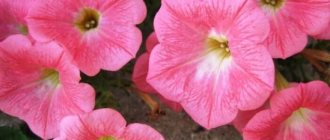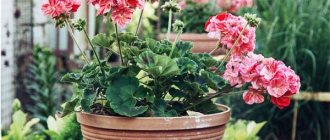Right choice
Fruit-bearing plants require plenty of sunlight, preferably at least 8 hours a day. Place them in the brightest spot in the house, either on a sunny deck or porch, or next to a large, unshaded, south-facing window.
Gardeners who want to grow fruit-bearing trees from seed should remember that seedlings take longer to begin bearing fruit than grafted trees and tend to produce poor fruit. For best results, it is recommended to purchase two to three year old grafted dwarf varieties. Indoor fruit plant species usually ripen faster from cuttings than from seeds.
Chinese rose
Chinese rose is a tree-like plant with large beautiful flowers of various shades. The rose is valued in the interior precisely for its beautiful flowers. The Chinese rose blooms almost throughout the warm period. Rose flowers only live for 2-3 days, but an adult Chinese rose bush constantly produces new buds, so the overall flowering period is quite long. The bred Chinese rose hybrids have not only single-color, but also two-tone flowers.
The plant is so unpretentious that a small cutting of a Chinese rose quickly grows into a large tree strewn with bright flowers.
If you periodically pinch the side shoots, the rose bush will not only be large, but also lush. The Chinese rose is one of the most favorite plants of both experienced gardeners and simply lovers of indoor plants.
Chinese rose on the windowsill
Chinese rose in the interior
Chinese rose in a pot
Malpighia
Malpighia, also known as Barbados cherries, contain 30 times more vitamin C than citrus fruits in their red berries. Its tolerance to dry air makes it one of the most convenient fruit trees to grow indoors, producing pink, swirl-like flowers in spring and cherry blossoms in summer. Place the tree outdoors on a sunny deck or balcony during the warmest months for a good harvest that ripens at temperatures above 25℃.
Avocado
While glossy-leaved avocados have long been popular houseplants, it has been determined that trees grown from seed are not actually suitable for producing fruit! They very rarely bear fruit, and if this happens, the quality of the harvest leaves much to be desired. If you want to get avocados at home, it is best to choose self-pollinating varieties. Be sure to keep the tree in well-drained soil, as avocados often have root problems.
Medlar
This evergreen shrub will grow without hassle from the seed of a ripe fruit plucked from a branch. Store-bought berries will also work. About 4 weeks after planting the seeds in the ground, shoots appear, and within a month the young shoots grow 15 cm. At this point, the medlar can be transplanted into a larger container. It will grow stronger and become a powerful bush. The plant will begin to bloom and bear fruit only in the third year.
This fruit tree is very beautiful. During flowering, the bush is strewn with white fragrant clusters. In autumn the foliage turns red, which looks very exotic in the home garden.
Even when fully ripe, medlar berries are quite hard and sour. To make them sweet and soft, they are kept in the refrigerator for several days.
Watering is moderate in summer and meager in winter, during the dormant period. This culture responds well to mineral supplements. The crown is periodically pruned, but not to form a bush, but to remove old branches and limit growth.
Calamondin
For gardeners who don't have a greenhouse, this orange tree remains the easiest and most popular to grow indoors. It bears fragrant white flowers and small, lime-sized, tart orange fruits almost all year round. Calamondin (citrofortunella) is a cross between a kumquat and a tangerine. If you want something unusual, choose a variegated calamondin variety such as Variegata. Keep in mind that Citrofortunella prefers cool conditions - 18-19 ℃ during the day and 12-14 ℃ degrees at night and in winter.
Coffee
Coffee is one of the easiest fruit plants to grow for beginners. It can bloom and produce crops throughout the year. This nice guy tolerates dry air well, can bear fruit in partial rather than full sun, and blooms at any time of year. Its fragrant white flowers give new meaning to the expression "waking up to the smell of coffee" and are preceded by green berries that ripen to red. However, the grown coffee beans will require cleaning, soaking and drying before grinding.
A coffee tree
Coffee grows in the warm tropical climate of Africa. The coffee plant loves warmth and humidity. In order for it to grow well, it needs to be placed in a warm, lighted place. The room must maintain a stable temperature of at least 18 degrees. In winter, you cannot place the seedling on the windowsill - the lump of earth in the pot may cool down and the sprout will die.
If the seedling is well cared for, regularly watered and sprayed, then under favorable conditions it will grow up to 1.5 meters. The stem thickens to form a trunk, which is crowned by an enlarged crown covered with wavy vegetation. It blooms twice a year: in spring and autumn. Small white flowers that emit a delicate aroma turn into green coffee beans.
Dwarf pomegranate
Dwarf pomegranate (Punica granatum 'Nana') is another fruit-bearing house tree. In Latin, nana means “small,” not “grandmother,” and this plant looks like a miniature pomegranate tree. Its red-orange “bells” in summer give way to fruits no more than 5 cm long. An evergreen plant in warm conditions does not require coolness, like larger pomegranates. Although this tree tolerates dry conditions and low humidity, bring it indoors before temperatures drop below 10℃ in the fall, otherwise the deciduous 'nana' may remain leafless throughout the winter.
Nightshade propagation
It reproduces easily. This can be done either by seeds or cuttings.
Propagation by seeds
The most interesting thing is that in this case your participation may not even be needed. Nightshade reproduces well by self-sowing. In this case, all that remains is to plant the young plants in separate pots. But if you remove fallen fruits from the pot, this will not happen. To propagate indoor nightshade, you will need to collect seeds from ripened fruits. To extract them from fallen ones, for example. Seeds should be sown in spring in a light seedling mixture. And the process itself is no different from sowing vegetable and flower seeds for seedlings. The seeds do not need to be buried in the ground. Just spread them over the surface of the earth and lightly cover them with sand or perlite. After this, moisten with a spray bottle and cover with glass or film. At normal room temperature, seedlings will appear in 10-14 days. After the true leaves appear, pick them up. You can form a bush when it reaches a height of 10 centimeters.
Propagation by cuttings
Cuttings can be propagated both in spring and summer. The process itself is very simple. Cut a cutting with two to four leaves and plant it in a light mixture of peat and sand. Place the pot under a transparent cap. A glass jar works well. Monitor the soil moisture, spray the cuttings, ventilate it. With proper care, the nightshade cuttings will quickly take root and grow.
Figs
As many non-fruit-bearing relatives of figs prove, members of the ficus genus make good houseplants. Figs are usually not very bothered by pests or diseases except in very dry conditions. The Petite Negra variety begins to bear fruit when it is less than 30cm tall and produces beautiful dark purple figs. Although figs are usually always covered in leaves, they may drop them if left outside during cool autumn months. This doesn't mean he's dead - he's just dormant.
Collection of decorative and fruit-bearing indoor plants
When there is no garden, but you want to see beautiful plants on the windows, then flowers begin to appear on the windowsills.
And it’s not at all necessary that they bloom - even cheerful greenery lifts your spirits! And there are so many plants, and they are all so different, that you can choose one for almost any location: north and south windows, dry and wet rooms. Asparagus from seeds grew fluffy and spreading
Today I propose to plunge into the world of indoor plants on Seedspost.ru and choose them for yourself and your apartment.
Damp and damp areas
In some apartments, as well as in private houses, there is a window in the bathroom or toilet.
And since the rooms are quite humid, not all plants can get along in such a place. And the most unpretentious ones can be called cyperus and isolepsis. Most often, Cyperus is still propagated by pieces of leaves, but if you want a different variety, you can try propagation by seeds.
Cyperus
Some Cyperus species reproduce better by seeds than by leaves, for example Papyrus.
Cyperus papyrus
The main thing when propagating from seeds is light and moisture.
Isolepsis is a real exotic for wet rooms. It is beautiful on its own, but when white flowers appear at the tips of the leaves, it is simply beautiful! This plant really needs moist air and watering; it grows well from one seed, turning into a good bush. His germination rate is excellent!
Isolepis
My young isolepis bush died due to drying out of the soil. But at that time it was already blooming, so, having collected the seeds, I sowed them again, and now I have about 10 isolepis bushes growing. When planting, I added hydrogel to the soil, just in case.
It is better to germinate Isolepis in hydrogel
South hot and sunny windows
South-facing windows provide a lot of light, a lot of warmth, and sometimes a real test for plants.
And if in Moscow and St. Petersburg everyone will be fine in this window, then here, in the Southern Urals, only a few will survive in such Spartan conditions. And the very first contenders are cacti and succulents. cacti
Growing cacti from seeds is very interesting. Especially in a mixture, recognize different species in young seedlings: mamillaria or prickly pear, “barrels” or “sticks”. Cacti grow very slowly, but they are so unpretentious that sometimes it’s worth sowing them in a mini-garden and observing. The main thing for them is light, warmth and a minimum of watering. cacti
You can sow different mixtures and compare the results. Well, and quite exotic - lithops , they are also living stones. Only for the hottest windows, and in winter - with additional lighting.
Lithops
Beautiful succulents include echeveria, which grows with a very compact rosette of leaves that can reach 15 cm! Echeveria
If you don’t want to bother with thorns or small things, but want something powerful and beautiful, plant a Bottle Tree. bottle tree
Nolina can grow up to 2 meters, although this will not happen very soon. Caring for it is simple: rare watering, feeding in the summer. It will feel good in the greenhouse, perhaps even bloom.
Bright and humid rooms will be loved by dizygoteca, which also grows up to 2 meters in height. Its original leaves will definitely attract the attention of guests.
Dizygoteka
Another succulent that can tolerate both heat from sunlight and partial shade is Papychodium. Papychodium
Attention - papychodium has poisonous juice!
Bright spacious rooms
When talking about indoor plants, we must not forget about palm trees.
There is such a variety here that your eyes widen! Almost all palm trees love bright light, but not direct sunlight, which is very strange. Livistona can be found among the fan palms. She prefers damp rooms, so you need to spray the leaves periodically.
Liviston
Another fan palm is Washingtonia . In indoor conditions it grows up to 2-2.5 meters, loves periodic spraying on the leaves. Washingtonia
The giant among fan palms is Washingtonia Robusta, which forms a trunk up to 20 meters high. Washingtonia robusta
All palm trees have different seeds When talking about palm trees, date palms immediately come to mind, which many people planted by eating ordinary dates. And yet they grew! Date palms
In the Seedspost.ru store you can find different palm trees, and although they seem to look very similar, their seeds are different! The Canary one has a round stone, the date one has an elongated one.
And if palm trees are slow-growing plants, the same cannot be said about fatsia . In just a couple of years it can turn into a spreading bush, up to 2 meters high. Fatsia
The best place for it is cool (up to +20°C), bright rooms with high humidity. Probably, in St. Petersburg or Vladivostok the weather is just right for her.
Dracaena can also be classified as large-sized plants. It is unpretentious, survives the dry air of apartments well, and is very effective in large rooms. Dracaena
Two more green-footed beauties, growing up to 2 meters, boast beautiful carved leaves: grevillea and jacaranda. Both beauties love bright light without direct sunlight and high humidity. And here are two more “almost palms”: Hamedorea and Hamerops. Hamedorea has delicate carved leaves, is very moisture-loving and loves spraying. He is afraid of the sun and quickly dries out under its rays, even to the point of death. Chamerops with stronger leaves, with prickly petioles, also likes frequent watering and spraying.
Compact “palm trees” also include cordelines (dracaenas). These are false palms with the shape of a classic palm: southern and undivided
And for lovers of large leaves, philodendrons are perfect. They have glossy leathery leaves on long petioles; you can choose seeds from Search or Gavrish.
Also suitable for decorating large rooms is indoor birch - cissus and another large-sized one - fatsia. Cissus climbs well along the support, braiding up to 60 cm per year. But such plants grow in our city in a greenhouse: there are palm trees and bananas.
North windows
You can also find suitable plants for northern windows. My favorite flower is ficus benjamina .
Ficus benjamina It is believed that ficus helps to have a child. In my case, this is exactly what happened. In addition, caring for ficus is very simple: watering, fertilizing, wiping dust from the leaves. It lends itself well to shaping, including “braiding hair” and creating a “lattice”.
Ficus benjamina collects dust with its leaves, purifying the air in the room
Ficus benjamina dunetti
Another variety of ficus differs in that the shoots grow more horizontally, as if drooping.
For bonsai lovers, I offer this interesting ficus. It is distinguished by a thick trunk and branched crown. Ficus
East windows
On the eastern windows the sun shines early in the morning, before lunch, it is not very hot, so it is suitable for many plants that prefer to grow in partial shade.
And this is the right place for the openwork foliage of asparagus. Asparagus Meiri
This asparagus can be found under the name Meira or Meiri, a very interesting bush with branches pointing upward. It grows quite slowly and is unpretentious.
Asparagus Meiri
A more “shaggy” asparagus is Sprengeri (sprengeri). He really looks more disheveled compared to Meiri.
Sprengeri
Caring for it is absolutely the same as caring for the first one.
Asparagus Sprengeri, much larger than its counterpart
Well, probably the most common type of asparagus is pinnate. Its leaves, arranged like green airy clouds, create the effect of lightness and tenderness. Pinnate
Shefflers are also suitable for sunny rooms: tree-like or star-leaved. Both love good watering and misting.
Schefflers
Another interesting plant is cypress . Absolutely unpretentious, practically unkillable, it survived both dry summers and short-term autumn frosts. Cypress
The seeds require stratification; out of the whole heap of seeds, only one seed sprouted, but it grows completely without problems.
Cypress requires stratification
Coleus and hypoestes are famous for the most varied leaf colors.
Fruit-bearing indoor plants
Sometimes you want to grow on the windowsill not just greens, but something edible, but not a lemon, or a home garden, but something… unusual.
The following selection will help with this. Laurel, also known as laurel, has aromatic, fragrant leaves used in cooking.
Arabica coffee is a low-growing plant that can be shaped like a tree or shrub by pinching. Blooms well and sets fruit in pots.
The figs in the room grow up to 2.5 meters in height. It is a deciduous plant with edible fruits that ripen from July to September.
Guava is a native of tropical forests. His (or her) fruits resemble a combination of pear, quince and fig.
Dwarf pomegranate grows well in an ordinary apartment; its fruits are quite edible, although small.
But the sausage tree can only be planted in large rooms with high ceilings. And banana and cotton can be planted as ornamental plants.
Kumquat
Kumquats, with their tart fruits that look like small oranges and are typically no larger than grapes, are among the easiest citrus plants to grow indoors. The fact that they don't require cleaning makes them even more attractive! They bloom in summer and produce fruit the following winter. If you don't like the typical "Nagami" variety from the supermarket, grow "Meiwa" or "Fukushi" instead. The first bears the sweetest fruits, the second the largest, some say the size of small orange apples.
Monstera
The evergreen monstera of the liana family was brought to us from South America. The young plant looks like a bush, covered with large leathery leaves, which over time become covered with cuts and holes. Many consider it a non-blooming monster. It is not true. Tropical beauty rarely blooms. The monstera flower is a dense white bud, in the center of which is a variegated fruit, similar to an ear of corn.
Monstera is unpretentious in care. Needs regular watering and spraying. The shade-loving plant does not tolerate direct sunlight, so it is best to place it away from southern windows. It should also be noted that monsters do not like to move from place to place - you need to immediately assign them a certain angle.
Lemon
Although the Ponderosa lemon produces huge fruits - 1-2 kg each - this may be too much for a house plant. But if you want something unusual, then this variety is for you. The Meyer variety (the result of a natural hybridization of pomelo, mandarin and citron) is an attractive alternative for most gardeners. In the spring, "Meyer" produces fragrant white flowers, and in the fall - fruits weighing 80-120 grams.
Lime
If you want a classic lime variety, choose one of the true limes or its relative, the Persian lime. If you prefer something a little more unusual, choose the Australian finger lime, which has fruit that resembles plump green fingers and is less susceptible to root rot than its relatives. Finally, there is the Kaffir Lime, also known as the Kaffir Lime, most commonly grown for the unusual clumpy appearance of its fruit, and recommended by Martha Stewart as a flavoring for Thai food.
Miracle berry
Miracle berries or sweetberry (Synsepalum dulcificum) are known for their ability to suppress the taste buds responsible for the perception of sour and bitter tastes, making all foods sweet. Although these effects are short-lived, the plant is popular with gardeners. It grows into a beautiful veined tree with 2cm long red berries. Give it acidic soil and do not water with hard water. In addition, from time to time, help the bush pollinate.
What fruit-bearing trees grow in your home? Share names and experiences in the comments! If you liked the article, share it with your friends on social networks!
Kuznetsov Daniil. Freelance writer











